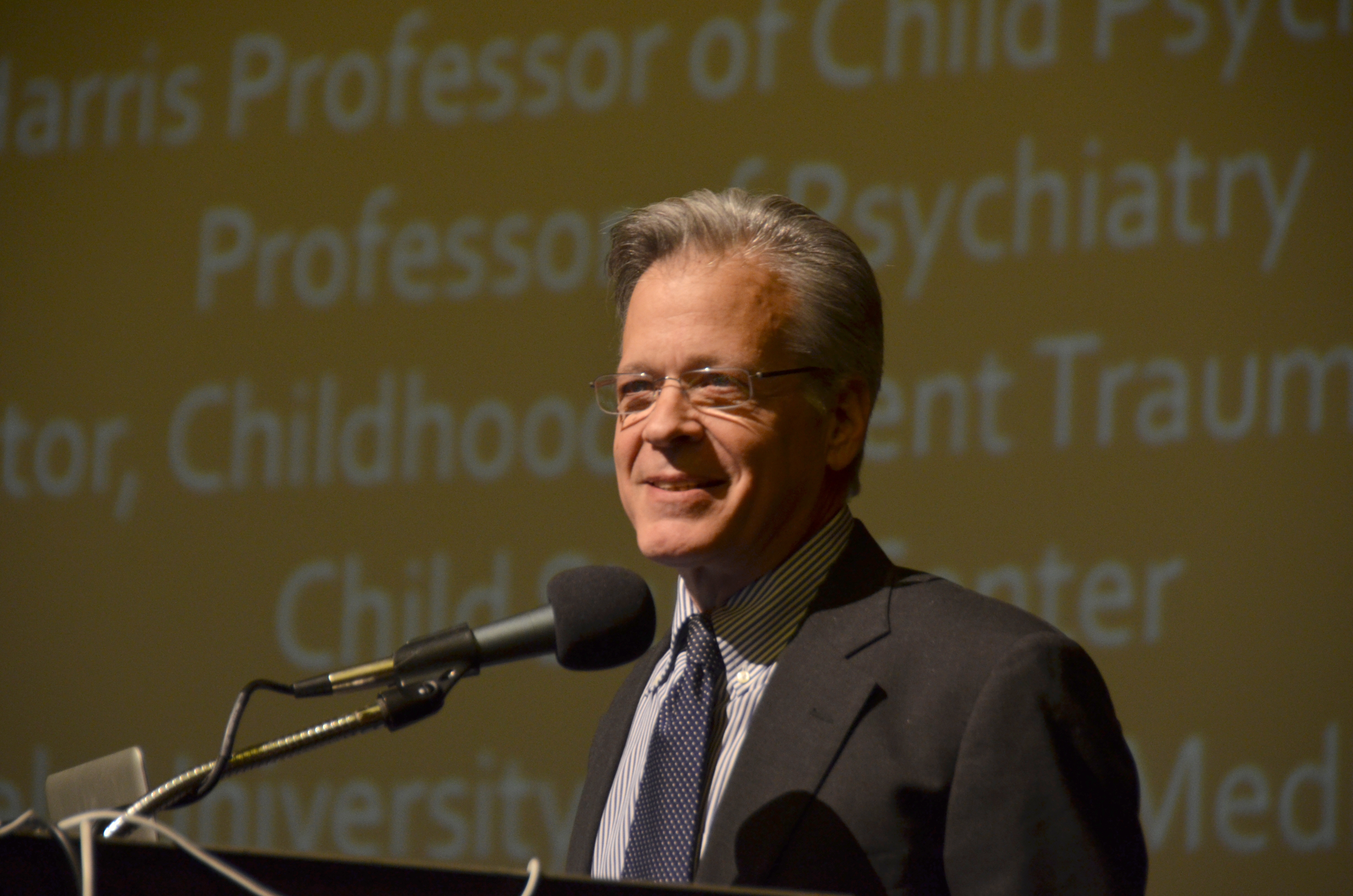Edith Harris Lecture - November 14, 2013

Edith Harris Lecture: National trauma expert describes toll of violence and tools for recovery
Being identified as a victim of trauma and receiving subsequent family and social support are the two greatest predictors that a child will recover from a traumatic incident, Steven Marans, director of the Childhood Violent Trauma Center at Yale University’s Child Study Center, told a Wayne State audience on Nov. 14.
Children’s unaided efforts to regain control after a traumatic event come at a “huge cost” to their psychological well-being, making early detection of their distress and problematic coping strategies critical to their healing, said Marans, who is also Harris Professor of Child Psychiatry and Professor of Psychiatry at the Child Study Center and Department of Psychiatry, Yale University School of Medicine.
Defining psychological trauma as an “overwhelming, unanticipated danger that leads to a subjective experience of helplessness, loss of control and terror,” Marans said children have less capacity than adults to adapt to the disruption in their thoughts, emotions and bodily processes. Hypervigilance is a common but damaging defense mechanism among children, said Marans, because it merely prolongs the neurophysiological dysregulation caused by their initial trauma.
Marans, who delivered the WSU School of Social Work’s 26th Annual Edith Harris Endowed Memorial Lecture at the university’s Community Arts Auditorium, said childhood trauma often goes undetected because it is revealed by young victims in varied and ambiguous ways, such as avoidance, sleep disturbances, physical complaints, irritability, withdrawal and social difficulties.
“When children can tell us they are scared, they often can’t say why,” Marans noted. “Usually their behavior is the only language that communicates their stress.”
Harnessing community for solutions
Studies estimate that 15.5 million children are exposed to domestic violence each year in the United States, while seven million are exposed to severe and chronic violence, Marans said. Not surprisingly, children who witness violence are at significantly higher risk of falling victim to violence – a rate that’s higher for girls than boys. Victims of violence are also more likely to perpetrate violence themselves, attempt suicide, and abuse drugs and alcohol.
In addition to early identification and support, factors that predict recovery from trauma are the victim’s emotional and physical proximity to the event and secondary effects such as physical displacement and social disruption, both of which are common during a natural disaster. Also playing a role are individual factors such as genetic vulnerabilities and capacities, psychiatric disorders, age and developmental level, prior history with trauma, and psychopathology within the family.
Evidence shows that interventions focusing on early identification and support of young trauma victims are critical, Marans said. Because of their role as first responders, police officers are uniquely positioned to identify victims of trauma, a realization that led Marans jointly to develop the Child Development-Community Policing (CD-CP) Program. Replicated in 18 communities in the United States and overseas, CD-CP is a community-based model that trains clinicians in police procedures while training police offers in child development, human behaviors, trauma and community policing. A yearlong study comparing women who received the intervention with a control group found that women in the program called for police assistance more frequently and for less severe incidents, resulting in fewer traumatic experiences for their children.
Marans also discussed the Child and Family Traumatic Stress Intervention (CFTSI), a brief, evidence-based intervention he co-developed that is used immediately after a trauma or disclosure of a trauma. In five to eight sessions, children and their families are screened, educated about stressors that may impede recovery, and assessed for the need for longer-term treatment. Marans said the intervention, which has been shown to prevent chronic post-traumatic stress disorders and related disorders, is powerful because it gives children and their families a shared vocabulary and listening skills to communicate about the trauma effectively.
Acknowledging the sorrow and outrage that those treating child trauma victims experience, Marans encouraged social workers and other clinicians in the audience to find support in one another and in their ability to give their clients a better life. Citing the Declaration of Independence, Marans observed that social workers help children claim their inalienable rights.
“No one should be handicapped in their pursuit of happiness because they were left to struggle and suffer alone,” Marans said.
The annual Edith Harris lecture, made possible through the generosity of the Harris Foundation, provided social workers with Continuing Education Contact Hours. Trauma is an area of expertise for several School of Social Work faculty, including Associate Dean for Academic Affairs Delores Dungee-Anderson, who is a member of the national task force that recently completed the development of trauma practice competencies in collaboration with the National Center for Social Work Trauma Education and Workforce Development.